Departments
Skip to content
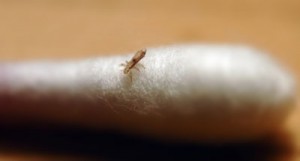
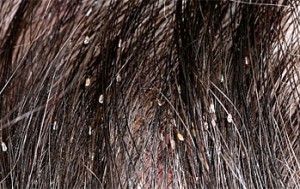
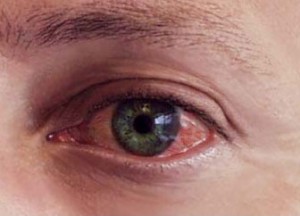
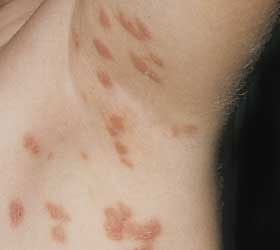
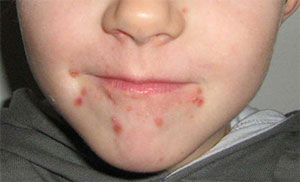
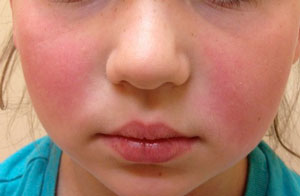
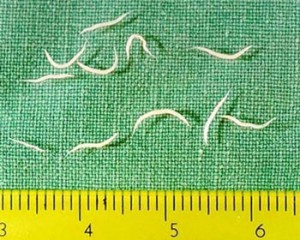

Health tips from our school nurses
Each year, our school nurses encounter cases of very common school-age diseases. Below are some basis guidelines to help parents sort through the many symptoms and trying to decide whether to send their children to school, or perhaps a healthcare provider. These are only guidelines; please feel free to call your school nurse if you have further questions:

An adult louse is tiny, just 1/16″ – 1/8″ long. Look for them near the base of the neck and around the ears. They usually cause red patchy spots when they bite.

Lice lay eggs called nits and attach them to the base of hair shafts. If it looks like dandruff, but isn’t easily removed, it’s likely nits.
Head Lice
Head lice is a parasite that lives in human hair and feeds on tiny amounts of blood drawn from the scalp.
Symptoms: Itching on the scalp, neck and ears is the most common symptom.
What to do:
During the school year, routinely inspect your child’s head for the possibility of head lice—especially if they complain of an “itchy head.” Look for small silvery nits fixed to the hair shaft, similar in appearance to dandruff, but not easily removed. Where nits have hatched, live lice may be seen.
If nits or lice are found, please call your healthcare provider regarding appropriate treatment. Your child should stay home from school until they have been treated.
Follow the directions for any medication carefully. Note that cream rinses and conditioners can decrease the effectiveness of the treatment.
Please notify the School Health Office if your child is diagnosed with head lice, and call with any questions or concerns.
Talk to your child and remind him or her not to share or borrow combs, brushes, hats or scarves.
District head lice protocol:
Central Valley School District has adopted procedures to provide a consistent protocol to eradicate head lice in the school setting. View the procedures followed when head lice is found on your child or in their classroom.

Conjunctivitis, commonly called Pink Eye, is the inflammation of the mucous membrane on the eyelid or eye. It can be highly contagious.
Conjunctivitis (Pink Eye)
Conjunctivitis is the inflammation of the mucous membranes of the eyelid or eye. It can be caused by bacteria, virus or allergies—the bacterial and viral forms are highly contagious.
Symptoms:
Irritated swollen eyes or eyelids
Itchy eyes
Excessive tears
Blurred vision that clears with blinking
Green or yellow discharge
Painful dried or crusted discharge on the eyelids
What to do:
If your child has symptoms, see your child’s healthcare provider as soon as possible and follow his or her recommendations.
Treatments vary for the different causes (bacteria, virus or allergy).
Your child’s healthcare provider may decide to exclude your child from school.
Pink eye is best controlled by diligent hand washing.
Any family member or friend who may have had prolonged skin-to-skin contact with a scabies patient should also see a healthcare provider for examination and treatment.

Scabies is a microscopic mite that burrows under the skin causing a pimply rash.
Scabies
Scabies is a mildly contagious skin infection caused by a microscopic skin mite. The mite burrows into the upper layer of skin where it lives and lays its eggs.
Symptoms:
Intense itching, especially at night
A pimple-like itchy rash
The itching and rash are commonly found in the folds of skin such as the wrist, elbow, armpit, webbing between the fingers, waist, belt-line, and buttocks.
Scratching the rash can cause skin sores; sometimes these sores become infected by bacteria.
What to do:
See your child’s healthcare provider as soon as possible.
Treatment is normally a prescribed medication applied from the neck down. (There are no over-the-counter treatments.)
Avoid prolonged skin-to-skin contact.
Carefully launder all clothing and bedding.
Anyone having prolonged skin-to-skin contact with a scabies patient should see a healthcare provider for examination and treatment.

Hand, Foot and Mouth (Coxsackie virus) is a contagious viral disease that causes a blister-like rash on hands, feet, and in the mouth.
Hand, Foot and Mouth Disease (Coxsackie virus)
Hand, Foot and Mouth Disease causes a blister-like rash that, as the name implies, involves the hands, feet and mouth. It is most common in children 10-years-old and younger, but can spread to older children and adults.
Symptoms:
Fever, poor appetite, runny nose and sore throat can appear three to five days after exposure.
A blister-like rash on the hands, feet and in the mouth usually develops one to two days after the initial symptoms.
What to do:
Children with a rash or fever should not attend school.
This is a virus, so there is no treatment for the disease.
Control fever as needed and provide plenty of fluids.
Avoid contact with any bodily fluids.
Diligent hand washing is the best way to limit the spread of Hand, Foot and Mouth disease.

Fifth disease is a viral infection that often produces a lacy rash on the cheeks.
Fifth Disease
Fifth Disease, sometimes called “slapped face rash,” is a viral infection that occurs most often in elementary school-age children.
Symptoms usually appear one to two weeks after exposure:
Low-grade fever, runny nose and/or headache
A lacy rash on the cheeks, giving it a “slapped face” appearance
Rash may extend to the rest of the body and may fade with sunlight.
Rash may be itchy especially on the soles of the feet.
Some children have no symptoms.
Adults may experience painful or swollen joints
What to do:
This is a virus, there is no treatment other than to minimize the symptoms.
Fifth Disease is contagious prior to the appearance of the rash. Children with a rash may attend school.
Diligent hand washing is the best way to limit the spread of Fifth Disease.
The disease is seldom a problem for healthy children and adults. People with compromised immune systems, with Sickle Cell disease and pregnant women are at risk of developing chronic anemia and should see a healthcare provider.

Pinworms are a common parasite that live in intestines.
Pinworms
Pinworms are easily spread, parasitic worms that live in the colon and rectum. While an infected person sleeps, female pinworms migrate outside the intestines where they lay eggs in the folds of skin. A person may unknowing ingest the eggs by failing to thoroughly washing his or her hands after touching infested clothing or bedding, diaper changing or itching the infested area. It is also possible to inhale eggs that float into the air when shaking bedding or toys. As a result, pinworm eggs can pass quickly between family members.
Symptoms:
Itching around the anus (in some cases—not all infected people suffer itching)
If you suspect pinworms:
Look for white, wire-like worms in stool of diaper-age children
Inspect other family members:
Two to three hours after sleep
Shine a bright light directly on the anus after spreading buttocks looking for worms.
Check every night for one week, then re-examine in two to four weeks. (Eggs mature to adults in 15-28 days.)
Contact your healthcare provider.
What to do:
To avoid an infestation or re-infestation after treatment:
Thoroughly wash hands, especially after using the bathroom or changing diapers.
Bathe after waking up.
Wash pajamas and bed sheets routinely. (Eggs can survive up to two weeks.)
Change underwear daily.
Avoid nail biting.
Avoid scratching the anal area.
Thoroughly wash bedding, clothing and toys in at least 131°F water to kill eggs. (Note: most hot water heaters are set at 120-125°F)
Do not shake clothing or bedding when handling.
Carefully sweep or vacuum floors of bedrooms and living area.
Do not co-bImageathe infected children.

Strep throat is a bacterial infection that, if untreated, can lead to kidney or joint problems.
Strep Throat
Strep throat is a bacterial infection of the throat that most often affects children 5-15 years old. Although few sore throats are actually strep, it is important to identify cases because they can lead to kidney inflammation or rheumatic fever.
Symptoms:
Throat pain
Difficulty swallowing
Red and swollen tonsils, sometimes with white patches or streaks of pus
Tiny red spots on the soft or hard palate — the area at the back of the roof of the mouth
Swollen, tender lymph glands (nodes) in your neck
Fever
Headache
Rash
Stomachache and sometimes vomiting, especially in younger children
Fatigue
What to do:
See your healthcare provider for:
A sore throat and tender, swollen lymph glands (nodes);
A sore throat that lasts longer than 48 hours;
A fever higher than 101° F in older children, or any fever lasting longer than 48 hours;
A sore throat with a rash;
Problems breathing or difficulty swallowing anything, including saliva;
A lack of improvement after taking antibiotics for 24 to 48 hours;
A fever—or pain or swelling in the joints, shortness of breath or a rash—after a strep infection, even as long as three weeks after infection; these can be indicators of rheumatic fever;
Cola-colored urine more than a week after a strep infection may indicate kidney inflammation.
If your healthcare provider tests for strep throat, your child should remain at home until you have the results.
Your child should remain at home until having taken a prescribed antibiotic for 24 hours.
Text
Cold vs. Flu
A Cold and the flu are two very different diseases and need to be treated differently. Refer to the chart below for the basics:
Symptoms | Fever | Headache | General Aches, Pains | Fatigue, Weakness | Extreme Exhaustion | Stuffy Nose | Sneezing | Sore Throat | Chest Discomfort, Cough | Treatment | Prevention | Complications |
|---|---|---|---|---|---|---|---|---|---|---|---|---|
Cold | Rare | Rare | Slight | Sometimes | Never | Common | Usual | Common | Mild to moderate; hacking cough | Antihistamines Decongestant Nonsteroidal anti-inflammatory medicines | Wash your hands often | Sinus congestion |
Flu | Usual; high (100°F to 102°F; occasionally higher, especially in young children); lasts 3 to 4 days | Common | Usual; often severe | Usual; can last up to 2 to 3 weeks | Usual; at the beginning of the illness |
|
|
|
| Antiviral medicines— | Annual vaccination; antiviral medicines — see your doctor | Bronchitis, pneumonia; can be life threatening |
